 "ttyymmnn" (ttyymmnn)
"ttyymmnn" (ttyymmnn)
10/20/2020 at 12:35 • Filed to: wingspan, Planelopnik, TDIAH
 4
4
 6
6
 "ttyymmnn" (ttyymmnn)
"ttyymmnn" (ttyymmnn)
10/20/2020 at 12:35 • Filed to: wingspan, Planelopnik, TDIAH |  4 4
|  6 6 |
!!! UNKNOWN CONTENT TYPE !!!
Welcome to
This Date in Aviation History
, getting of you caught up on milestones, important historical events and people in aviation from October 17 through October 20.
!!! UNKNOWN CONTENT TYPE !!!
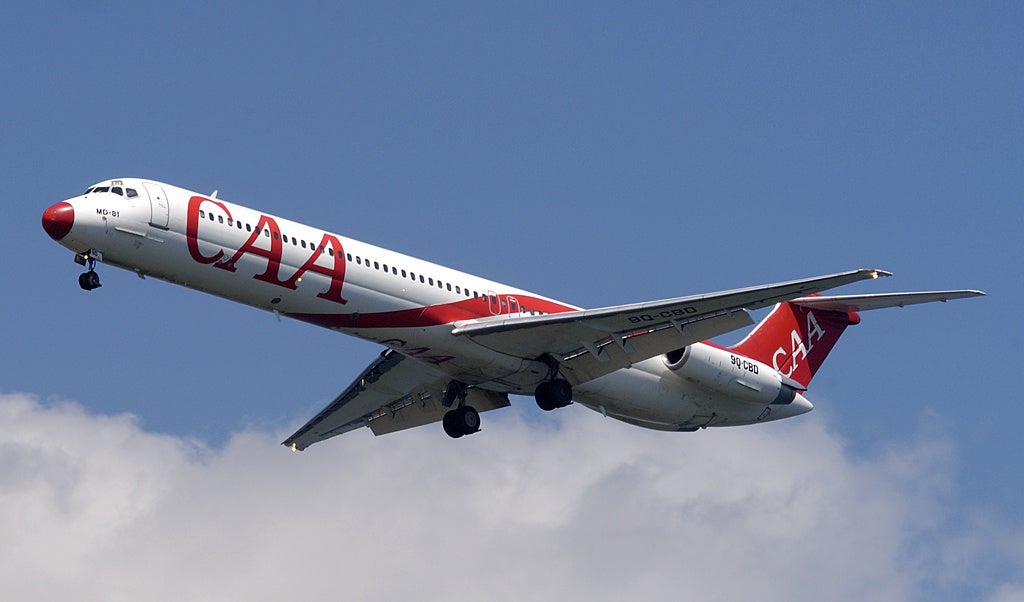
Compagnie Africaine d’Aviation McDonnell Douglas MD-81
October 18, 1979 – The first flight of the McDonnell Douglas MD-80. In the early days of jet airliner design, aircraft such as the !!!error: Indecipherable SUB-paragraph formatting!!! and !!!error: Indecipherable SUB-paragraph formatting!!! provided four-engine range and plenty of seating for large numbers of passengers. But as commercial aviation evolved, airlines found that they needed smaller airliners that could operate more economically on shorter routes. The !!!error: Indecipherable SUB-paragraph formatting!!! responded to that requirement with their !!!error: Indecipherable SUB-paragraph formatting!!! , a single-aisle airliner that appeared to take significant design cues from the !!!error: Indecipherable SUB-paragraph formatting!!! , particularly with the placement of the airliner’s two engines on the rear of the fuselage. Unlike the Caravelle, though, Douglas fitted its airliner with a T-tail which helped to keep the tailplane out of the disturbed airflow from the wings and fuselage. While the DC-9 proved to be a great success in its own right, its story is more of evolution than revolution.
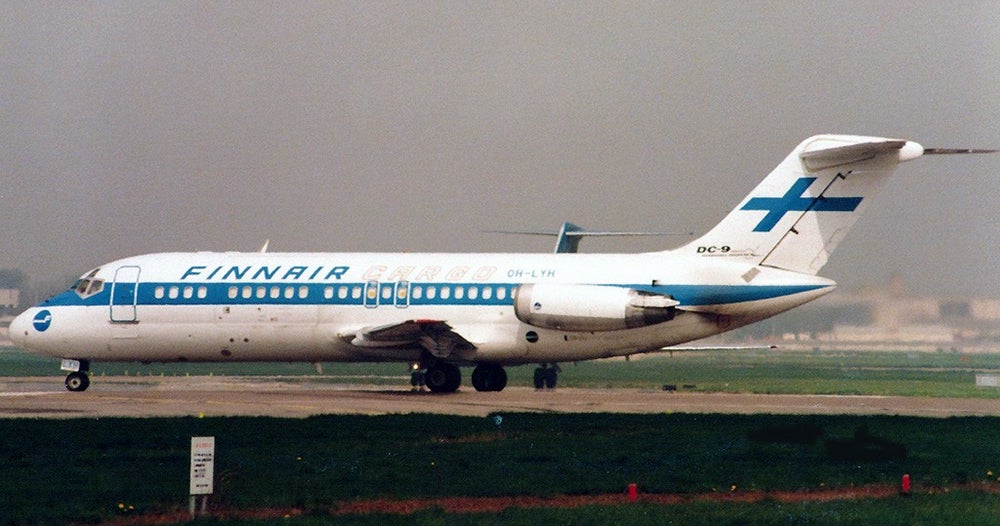
Finnair Douglas DC-9. The DC-9 formed the basis for an entire family of airliners which included the MD-80.
The DC-9 entered service in 1965 and became popular with airlines the world over. And, as the popularity of air travel grew, the DC-9 grew too. Following the introduction of the original DC-9, called the Series 10, McDonnell Douglas (Douglas had merged with the !!!error: Indecipherable SUB-paragraph formatting!!! in 1967) began to develop variants, stretching the fuselage to accommodate more passengers and upgrading the !!!error: Indecipherable SUB-paragraph formatting!!! engines. By the time McDonnell Douglas reached the fifth variant, the DC-9-50, passenger capacity had grown to 139 seats. But the DC-9 still had room to grow.
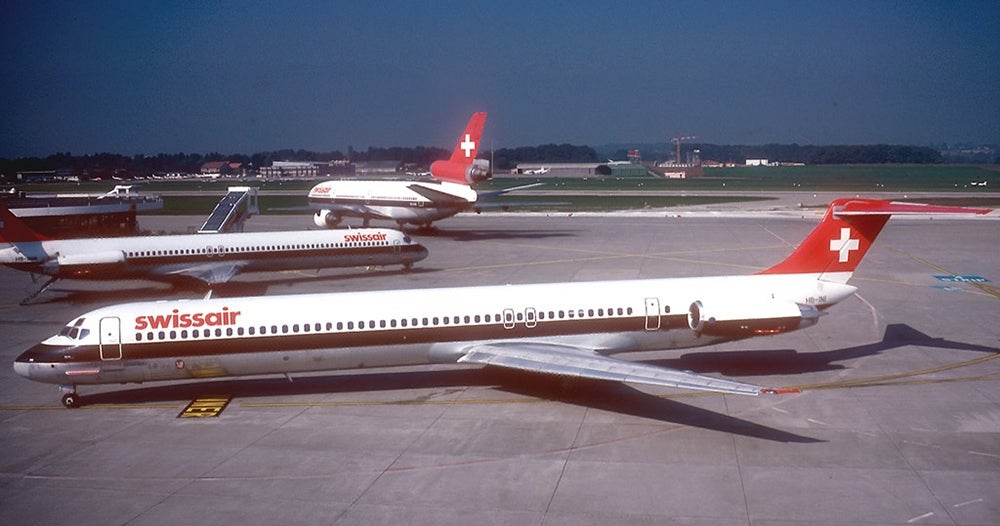
Swissair MD-81 at Geneva at Geneva Airport in 1986
The second generation of the DC-9 series, originally called the DC-9-80 or DC-9 Super 80, was renamed the MD-80, which simplified the nomenclature and also reflected the newly-merged companies. The MD-80, or “Mad Dog” as it is affectionately known, kept the DC-9’s characteristic five-across seating in coach, but the fuselage was lengthened by just over 14 feet compared to the previous DC-9-50, and now allowed for 130 to 172 passengers depending on configuration. New, more efficient, and quieter Pratt & Whitney JT8D high-bypass turbofan engines increased the airliner’s range and provided a higher maximum takeoff weight (MTOW). Despite changes to engines, wing design, and upgraded cockpit, the MD-80 was not considered a new aircraft by the FAA, and continues to operate under the original type certificate issued for the DC-9. The decision to change the name to MD-80 was purely a marketing choice.
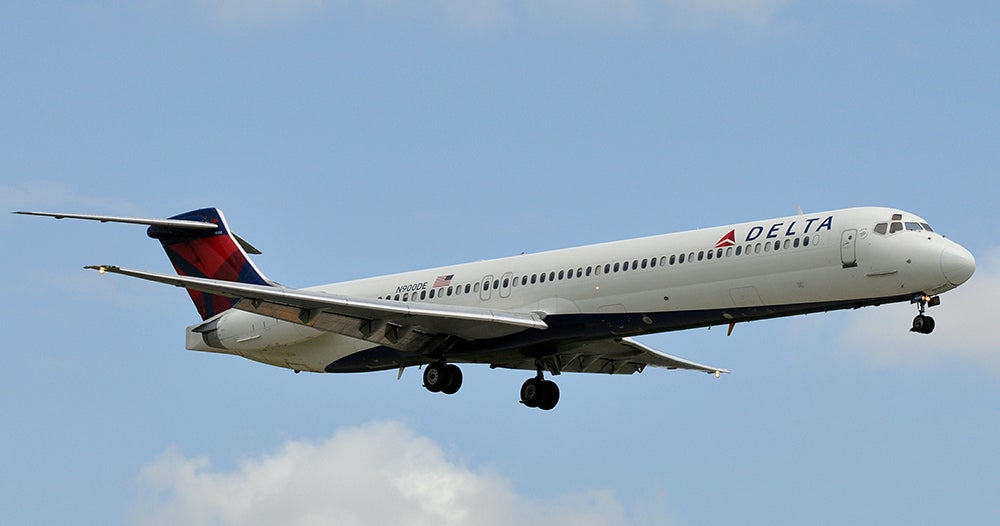
An MD-88 of Delta Airlines. Delta operates the world’s largest fleet of the MD-88, MD-90 and Boeing 717.
Following its maiden flight, the MD-80 entered service with Swissair and Austrian Airlines in 1980, and nearly 1,200 were delivered between 1980 and 1999. The MD-80 has been continuously upgraded throughout production, and now exists in the -81, -82, -83, -87 and -88 variants, all of which are essentially similar, but with upgrades to engines or avionics. The final iteration of the series that began in 1965 with the DC-9, the !!!error: Indecipherable SUB-paragraph formatting!!! , was initially marketed as the MD-95 before McDonnell Douglas merged with Boeing in 1997.
!!! UNKNOWN CONTENT TYPE !!!
All four major variants of the original DC-9 are still flying today, since they all look very similar, it can be difficult for plane spotters to tell them apart. Here’s a quick guide to identifying the four basic versions.
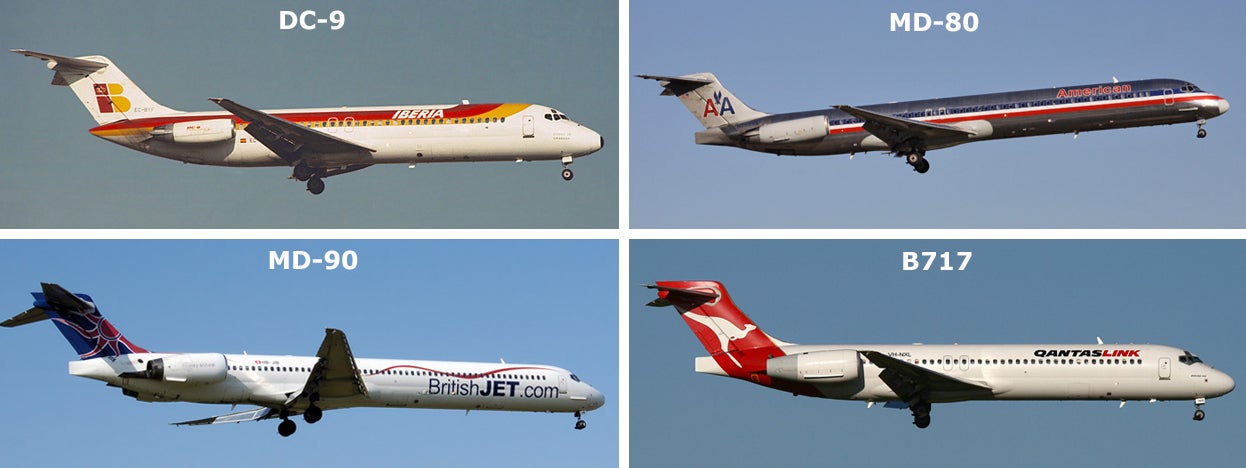
DC-9: Short fuselage, no !!!error: Indecipherable SUB-paragraph formatting!!! under the cockpit, pointy tail. (The last DC-9 variant, the DC-9-50, was equipped with strakes, but it retained the cone-shaped tail.)
MD-80 series: Longer fuselage, strakes under the cockpit, pinch tail, skinny (low-bypass) engines.
MD-90 series: Longer fuselage, strakes under the cockpit, pinch tail, fat (high-bypass) engines.
Boeing 717: Shorter body, no strakes under the cockpit, pinch tail, fat engines.
Essentially, since the original DC-9 and B717 are a similar size, you can tell them apart by the tail cone and the engine size. The MD-80 and MD-90, with are also similar in size, can be differentiated by their engine size.
!!! UNKNOWN CONTENT TYPE !!!
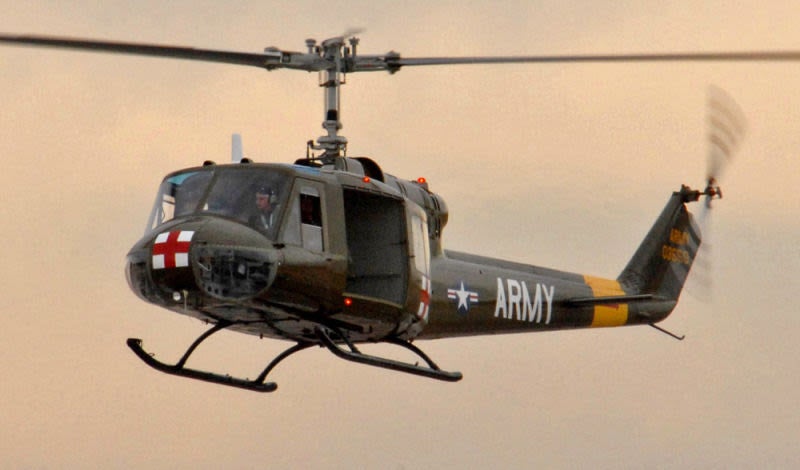
October 20, 1956 – The first flight of the Bell UH-1 Iroquois. Ever since the airplane became a weapon of war, certain aircraft have become symbols of the conflicts in which they served. In WWI, the !!!error: Indecipherable SUB-paragraph formatting!!! and the !!!error: Indecipherable SUB-paragraph formatting!!! became icons of the dawn of aerial warfare and dogfighting, while WWII saw the propeller fighter rise to its zenith with memorable fighters like the !!!error: Indecipherable SUB-paragraph formatting!!! , !!!error: Indecipherable SUB-paragraph formatting!!! , and !!!error: Indecipherable SUB-paragraph formatting!!! slugging it out over the Pacific, while the !!!error: Indecipherable SUB-paragraph formatting!!! , !!!error: Indecipherable SUB-paragraph formatting!!! and !!!error: Indecipherable SUB-paragraph formatting!!! became synonymous with the air war over Europe. The !!!error: Indecipherable SUB-paragraph formatting!!! and Soviet !!!error: Indecipherable SUB-paragraph formatting!!! became symbolic of the Korean War in the early jet age. Helicopters entered military service at the end of WWII, and their use was greatly expanded in the Korean War. But the Vietnam War, which came to be known as the “Helicopter War,” was the first conflict that saw widespread use of the helicopter on the battlefield and was the proving grounds for the maturation of the concepts of !!!error: Indecipherable SUB-paragraph formatting!!! . The ubiquitous presence of news cameras in a war zone for the first time brought vivid images of the Bell HU-1 Iroquois, better known as the Huey, into American living rooms, and it became an indelible icon of America’s longest war.
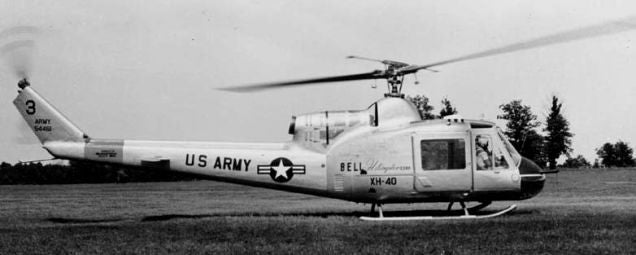
The Bell XH-40, the prototype of the HU/UH-1
The arrival of the turbine engine revolutionized helicopter design, and by the early 1950s the US Army began the search for a new turbine-powered utility helicopter for medevac and general utility. No less than 20 companies submitted proposals. In 1955, the Army selected !!!error: Indecipherable SUB-paragraph formatting!!! to build three prototypes of their Model 204 and received the military designation XH-40. By 1960, the Army had ordered 100 helicopters, and the designation was changed to HU-1 (Helicopter, Utility) and the nickname “Huey” was born. The monicker stuck despite a change in designation to UH-1 in 1965. While the turbine engine had definite advantages over earlier piston-powered helicopters in speed and lifting power, the original Hueys were still found to be underpowered. To address that shortcoming, Bell developed the first significant variant, the UH-1B, with a !!!error: Indecipherable SUB-paragraph formatting!!! engine that increased the lifting power. Bell also elongated the fuselage to accommodate seven passengers or four stretchers. The follow-on UH-1C received a still more powerful engine, a new rotor system to combat !!!error: Indecipherable SUB-paragraph formatting!!! , and a longer tail boom.
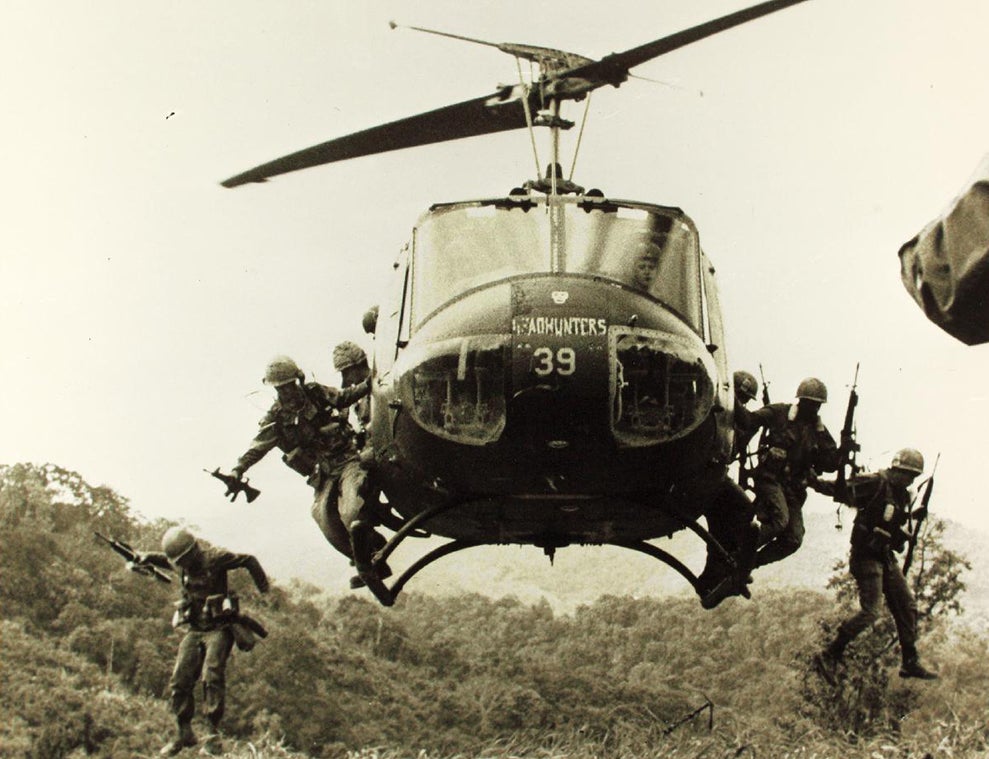
American soldiers leap into a landing zone from a UH-1 “Huey” during the Vietnam War
The Huey entered service in 1959 with the !!!error: Indecipherable SUB-paragraph formatting!!! , the !!!error: Indecipherable SUB-paragraph formatting!!! , and the 57th Medical Detachment, but its adoption was originally intended only for evaluation of the new helicopter. However, the rapidly escalating conflict in Southeast Asia meant that the Huey was quickly pressed into combat service in Vietnam by 1962. In addition to its medevac and transport roles, the Huey was soon armed with guns and rockets. These armed Hueys, nicknamed “Guns,” protected fleets of transport helicopters, known as “Slicks,” that dropped troops into landing zones. By the Battle of the Ia Drang Valley in 1965, the Huey had become the modern version of the cavalry horse, transporting soldiers into battle, carrying food and ammunition to the troops, whisking away the casualties, and then extricating the soldiers when the battle had ended.
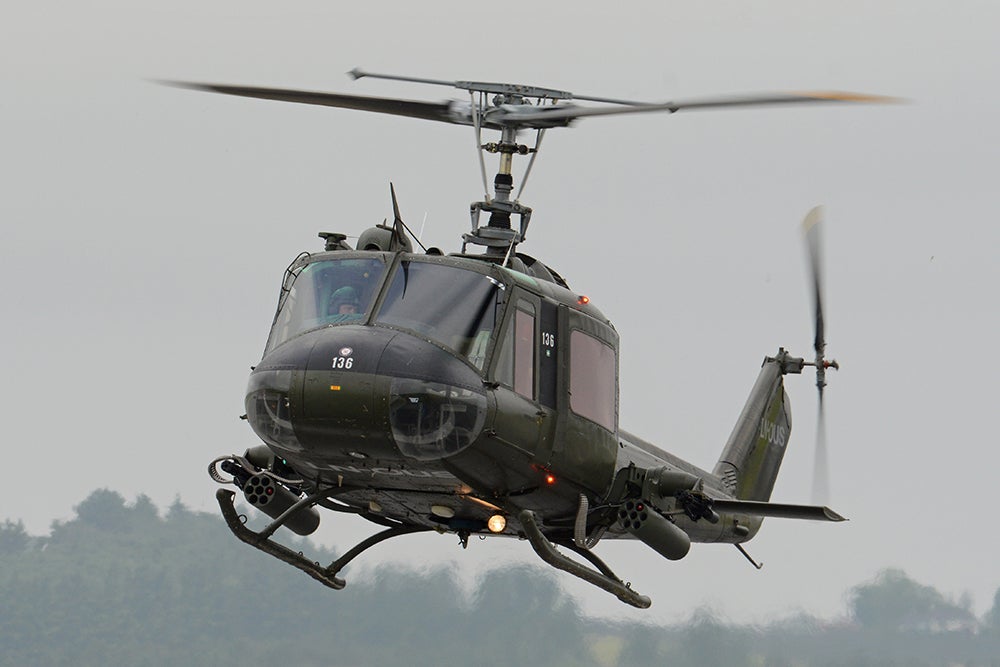
A UH-1E, the specific variant for the US Marines. The E model featured aluminum construction to resist corrosion, radios with Marine Corps ground frequencies, a brake to stop the rotor quickly during shipborne operations, and a rescue hoist.
Though closely associated with the Army, the US Marine Corps and US Air Force also adopted the Huey, with each service using a model that was developed for their specific needs.The Huey continued to be upgraded throughout its production, and over 16,000 were built between 1956-1987, a number second only to the the Russian !!!error: Indecipherable SUB-paragraph formatting!!! . With the introduction of the !!!error: Indecipherable SUB-paragraph formatting!!! in 1979, the Army began phasing out the Huey, and it was retired from active service in 2005. The Marine Corps continues using a significantly advanced version of the Huey, known as the !!!error: Indecipherable SUB-paragraph formatting!!! , while the US Air Force continues flying a modernized twin-engine version of the venerable Huey, the !!!error: Indecipherable SUB-paragraph formatting!!! , to patrol America’s nuclear missile sites.
!!! UNKNOWN CONTENT TYPE !!!
Short Takeoff
!!! UNKNOWN CONTENT TYPE !!!
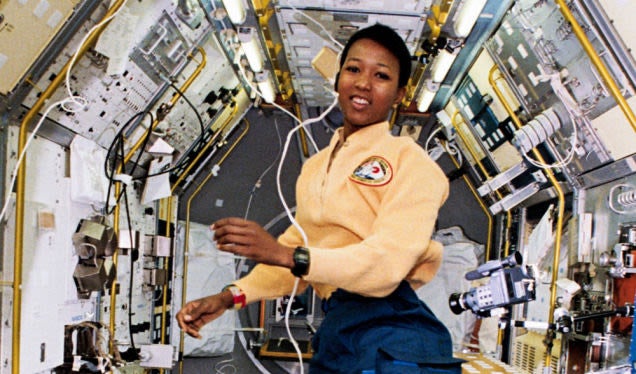
October 17, 1956 – The birth of Mae Je mison, the first African-American woman to fly in space. Before becoming an astronaut, Jemison was a practicing physician and a member of the Peace Corps, and cites the role of !!!error: Indecipherable SUB-paragraph formatting!!! on the television series !!!error: Indecipherable SUB-paragraph formatting!!! as her inspiration for become an astronaut. Jemison served as a Mission Specialist on the Space Shuttle !!!error: Indecipherable SUB-paragraph formatting!!! on !!!error: Indecipherable SUB-paragraph formatting!!! from September 12-20, 1992 and logged just over 190 hours in space. Following her one mission to space, Jemison retired from NASA in 1993 to start a technology company and made an appearance on !!!error: Indecipherable SUB-paragraph formatting!!! in 1993.
!!! UNKNOWN CONTENT TYPE !!!
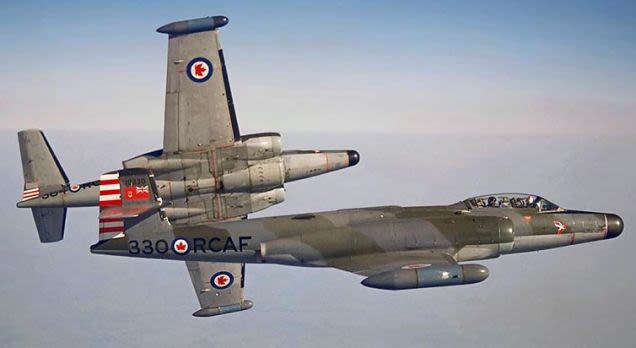
October 17, 1952 – The Avro Canada CF-100 Canuck enters service with the Royal Canadian Air Force. The Canuck, known to its pilots as the “Clunk” because of the sound made by the retracting nose wheel, was the only domestically-produced Canadian jet fighter to enter mass production. The CF-100 served as an interceptor for the RCAF throughout the Cold War as part of the !!!error: Indecipherable SUB-paragraph formatting!!! (NORAD) and with NATO forces stationed in Europe before eventually being replaced by the !!!error: Indecipherable SUB-paragraph formatting!!! . A total of 692 Canucks were produced, and the type was ultimately retired in 1982.
!!! UNKNOWN CONTENT TYPE !!!
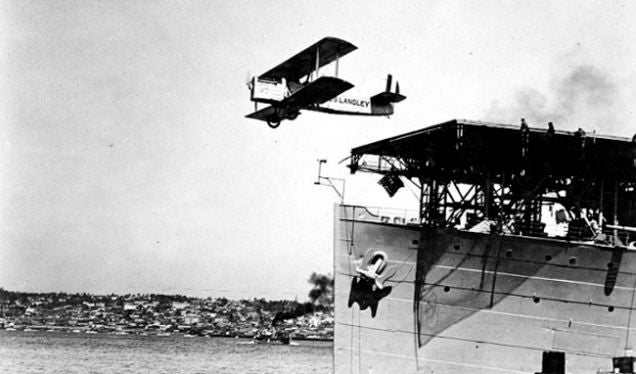
October 17, 1922 – The first takeoff from the US Navy’s first aircraft carrier. When Lt. Virgil C. Griffin launched a !!!error: Indecipherable SUB-paragraph formatting!!! biplane from the deck of !!!error: Indecipherable SUB-paragraph formatting!!! (CV-1), it was not not the first aircraft to take off from a ship, nor the first takeoff from a ship equipped with a flight deck. However, Langley , converted from collier USS Jupiter (AC-3), was the US Navy’s first true aircraft carrier. The flight marked the beginning of US carrier operations and heralded the ascendancy of the aircraft carrier as the new center of naval operations, supplanting the supremacy of the battleship as the nucleus of the modern naval battle group.
!!! UNKNOWN CONTENT TYPE !!!
!!! UNKNOWN CONTENT TYPE !!!
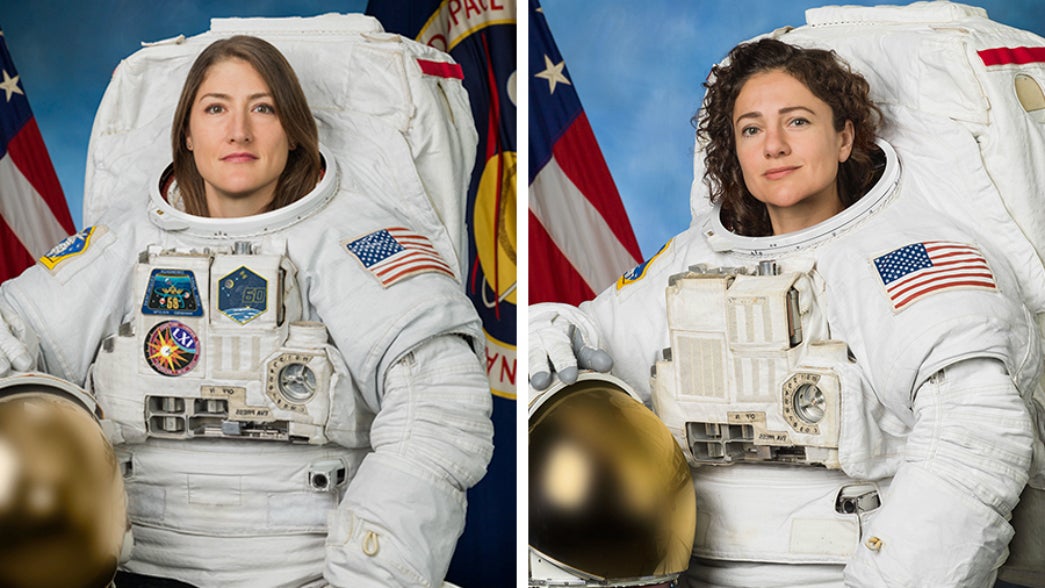
Astronauts Christina Koch and Jessica Meir
October 18, 2019 – NASA astronauts Christina Koch and Jessica Meir perform the first all-woman spacewalk. The two astronauts exited the International Space Station to repair a faulty battery charge/discharge unit (BCDU) which failed to activate after its initial battery replacement on October 11. The spacewalk began at about 7:30am EDT, and lasted approximately six hours. Koch and Meir performed two more all-woman spacewalks in January 2020. Cosmonaut Svetlana Savitskaya performed the first spacewalk by a woman in 1982, while Kathryn Sullivan became America’s first woman spacewalker two years later.
!!! UNKNOWN CONTENT TYPE !!!
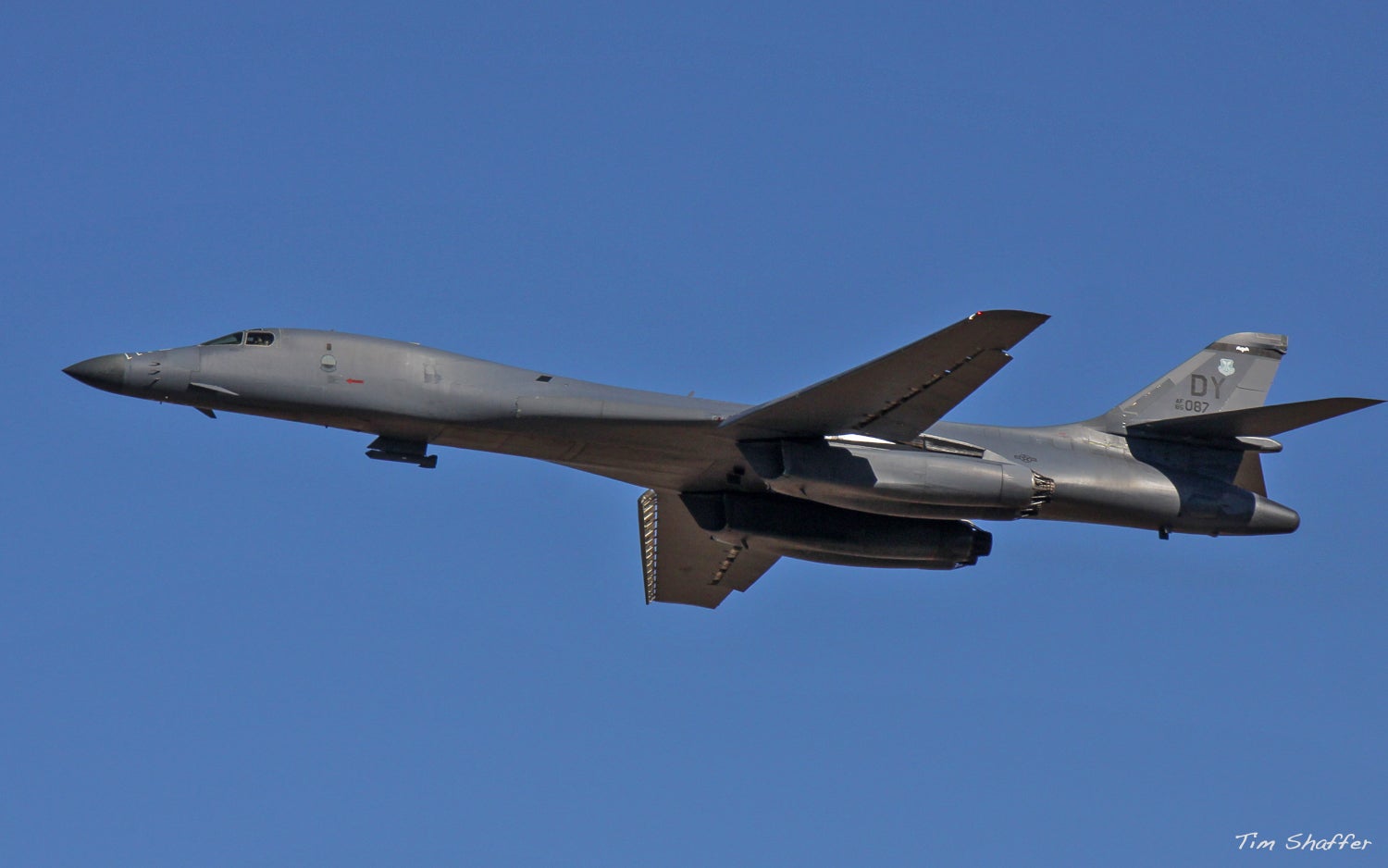
October 18, 1984 – The first flight of the Rockwell B-1B Lancer, a supersonic, swing-wing heavy bomber that was originally developed in the 1960s as a Mach 2+ replacement for both the !!!error: Indecipherable SUB-paragraph formatting!!! and !!!error: Indecipherable SUB-paragraph formatting!!! . The B-1A, which first flew in 1974, was canceled by the Carter Administration in 1977, but resurrected in 1981 as part of the military buildup initiated by President Ronald Reagan. The B-1B received redesigns that lowered its top speed but decreased its radar cross section, and a new suite of avionics helped it perform its new mission of high-speed, low-level penetration bombing. The B-1B has since evolved into an all-around bomber, capable of delivering both precision guided and unguided munitions, mines, and stand off missiles, though it is no longer capable of carrying nuclear weapons. The B-1B made its combat debut in 1998 as part of Operation Desert Fox, and has since flown in every American theater of conflict. A total of 100 were built, and the Lancer remains operational.
!!! UNKNOWN CONTENT TYPE !!!
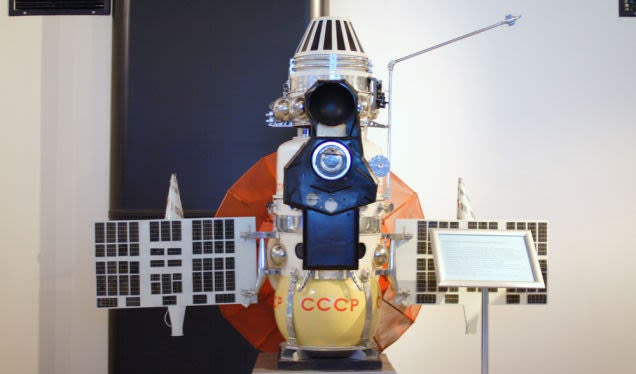
October 18, 1967 – Soviet space probe Venera 4 reaches Venus. Launched on June 12, 1967 atop a !!!error: Indecipherable SUB-paragraph formatting!!! rocket, Venera 4 was the fourth of 16 probes launched during the !!!error: Indecipherable SUB-paragraph formatting!!! and the first spacecraft to analyze the atmosphere of another planet. As it descended through the Venusian atmosphere, the probe’s sensors indicated that Venus is primarily carbon dioxide with some nitrogen, oxygen, and water vapors. Onboard sensors also provided data on temperature and pressure. It is not clear if Venera 4 survived the descent, but !!!error: Indecipherable SUB-paragraph formatting!!! became the first spacecraft to land on another planet when it touched down on Venus on December 15, 1970.
!!! UNKNOWN CONTENT TYPE !!!
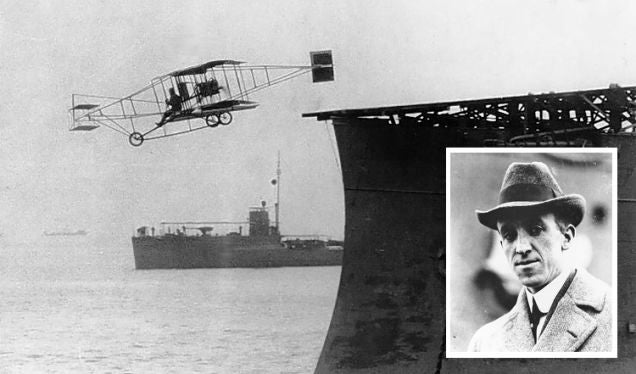
October 19, 1911 – The death of Eugene Ely.
Born in Williamsburg, Iowa on October 21, 1886, Ely began his flying career when he flew—and crashed—a Curtiss biplane purchased by the auto dealer Ely was working for. Undaunted, Ely repaired the plane, and then went to work for
!!!error: Indecipherable SUB-paragraph formatting!!!
. When the US Navy began investigating flying from the deck of a ship, it was Ely who made the first successful takeoff from a ship when he flew from
!!!error: Indecipherable SUB-paragraph formatting!!!
!!!error: Indecipherable SUB-paragraph formatting!!!
(CL-2)
on November 14, 1910. He followed that feat by landing his
!!!error: Indecipherable SUB-paragraph formatting!!!
onboard
!!!error: Indecipherable SUB-paragraph formatting!!!
!!!error: Indecipherable SUB-paragraph formatting!!!
(ACR-4)
two
months later. Though he was turned down for Naval service, Ely continued flying exhibitions, but was killed in a crash and posthumously awarded the
!!!error: Indecipherable SUB-paragraph formatting!!!
in 1933 “for extraordinary achievement as a pioneer civilian aviator and for his significant contribution to the development of aviation in the United States Navy.”
!!! UNKNOWN CONTENT TYPE !!!
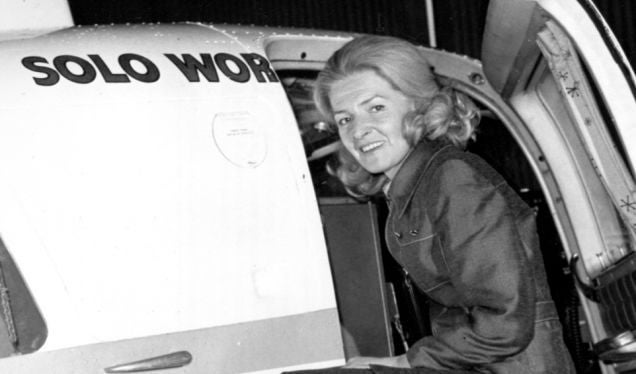
October 20, 1988 – The death of Sheila Scott. Born in England in 1922, Scott (née Hopkins) learned to fly in 1958 and went on to set over 100 flight records, most notably making a name for herself with long distance flights. She first flew around the world in 1966, and then repeated the flight in the same aircraft in 1969-70. Her greatest feat of distance flying was a 34,000-mile flight in 1971 nicknamed “world and a half” in which she became the first person to fly over the North Pole in a single-engine aircraft. Scott was named an Officer of the !!!error: Indecipherable SUB-paragraph formatting!!! (OBE) in 1968.
!!! UNKNOWN CONTENT TYPE !!!
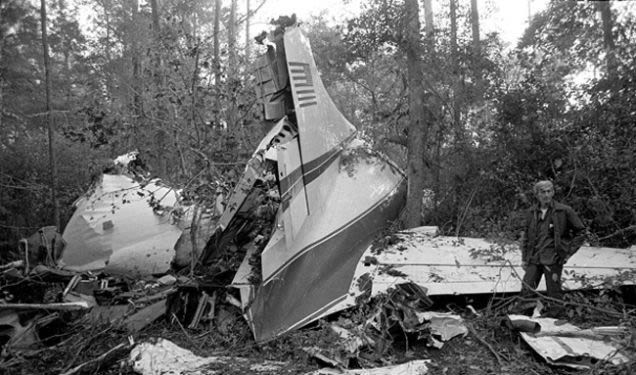
October 20, 1977 – Members of the band Lynyrd Skynyrd are among those killed in a plane crash. While flying to Louisiana after a performance in South Carolina, the band’s !!!error: Indecipherable SUB-paragraph formatting!!! (N55VM) ran out of fuel and crashed near Gillsburg, Mississippi. The crash killed band members !!!error: Indecipherable SUB-paragraph formatting!!! , !!!error: Indecipherable SUB-paragraph formatting!!! , and !!!error: Indecipherable SUB-paragraph formatting!!! , assistant road manager Dean Kilpatrick, pilot Walter McCreary, and co-pilot William Gray. Other musicians, tour manager Ron Eckerman, and members of the road crew suffered serious injuries. The !!!error: Indecipherable SUB-paragraph formatting!!! into the crash determined that the fuel exhaustion was caused by the flight crew’s failure to monitor the aircraft’s fuel levels, exacerbated by a malfunctioning engine that burned more fuel than expected.
!!! UNKNOWN CONTENT TYPE !!!
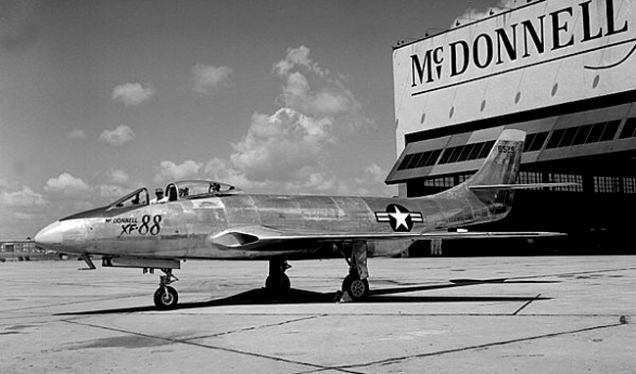
October 20, 1948 – The first flight of the McDonnell XF-88 Voodoo, a fighter designed as a long-range escort for US Air Force bombers and envisioned as an aircraft that could carry out a similar role to that performed by the !!!error: Indecipherable SUB-paragraph formatting!!! during WWII. Initially underpowered, afterburning engines were added to increase the aircraft’s speed, but by that time the long range escort concept had been abandoned in favor of high speed interceptors. Though the XF-88 never entered production, it served as the basis for the supersonic !!!error: Indecipherable SUB-paragraph formatting!!! which first flew in 1954.
!!! UNKNOWN CONTENT TYPE !!!
!!! UNKNOWN CONTENT TYPE !!!
Connecting Flights
!!! UNKNOWN CONTENT TYPE !!!
!!! UNKNOWN CONTENT TYPE !!!
!!! UNKNOWN CONTENT TYPE !!!
!!! UNKNOWN CONTENT TYPE !!!
!!! UNKNOWN CONTENT TYPE !!!
If you enjoy these Aviation History posts, please let me know in the comments. You can find more posts about aviation history, aviators, and aviation oddities at !!!error: Indecipherable SUB-paragraph formatting!!! .
!!! UNKNOWN CONTENT TYPE !!!
 Highlander-Datsuns are Forever
> ttyymmnn
Highlander-Datsuns are Forever
> ttyymmnn
10/20/2020 at 12:57 |
|
I’ve got dozens of flights on delta’s fleet of MD’s and 717's between Kalispell and SLC. Not a terrible plane, I usually prefer the 2_ 2 seating vs 3_ 3 as you don’t ever get a middle seat.
 InFierority Complex
> ttyymmnn
InFierority Complex
> ttyymmnn
10/20/2020 at 13:03 |
|
“indelible icon of America’s longest war” Second longest now, unfortunately.
I love the Clunk. I find it charmingly brutish. Apparently there is one down in Colorado Springs along with a Scorpion. I need to go check them out one day.
 ttyymmnn
> InFierority Complex
ttyymmnn
> InFierority Complex
10/20/2020 at 13:16 |
|
The USAF Museum also has one.
 ranwhenparked
> ttyymmnn
ranwhenparked
> ttyymmnn
10/20/2020 at 13:17 |
|
Aerosmith's management had rejected chartering that plane shortly before the crash, due to concerns about both the condition of the aircraft and the pilots, apparently Steven Tyler had been really set on having it, for some reason.
 facw
> Highlander-Datsuns are Forever
facw
> Highlander-Datsuns are Forever
10/20/2020 at 13:19 |
|
Don’t they have 2-3 seating? I mean you still avoid the middle seat if you sit on the right (which I think is the right) side. 2-2 is definitely one of the reasons I like the Embraer E-Jets though, much happier to fly on one vs. a 737/A320.
Edit: right about five abreast, wrong about the right (though maybe American did theirs differently):

 Highlander-Datsuns are Forever
> facw
Highlander-Datsuns are Forever
> facw
10/20/2020 at 13:24 |
|
This shows how bad my memory is. I’m pretty sure I always take the 2 seat side.